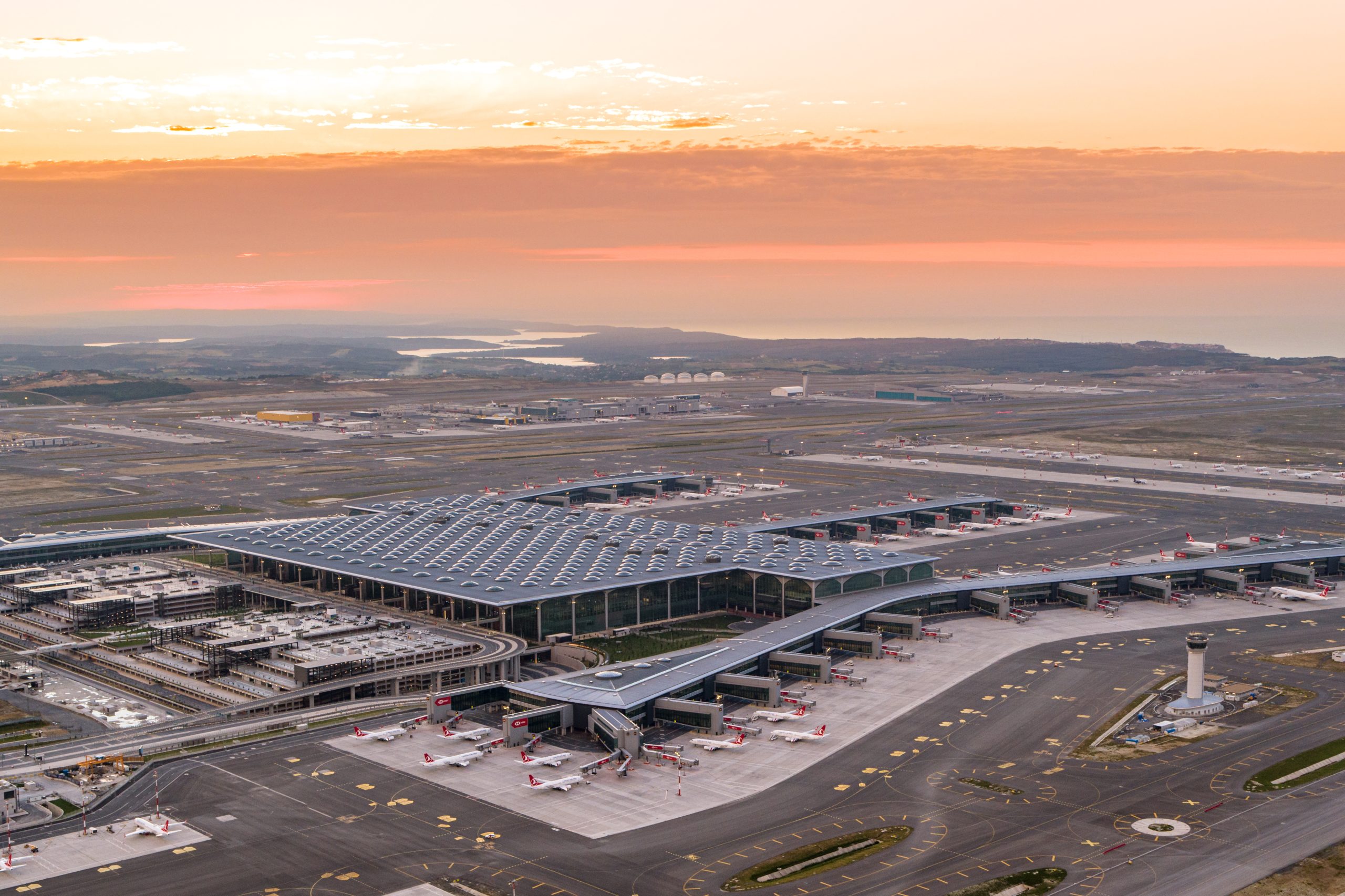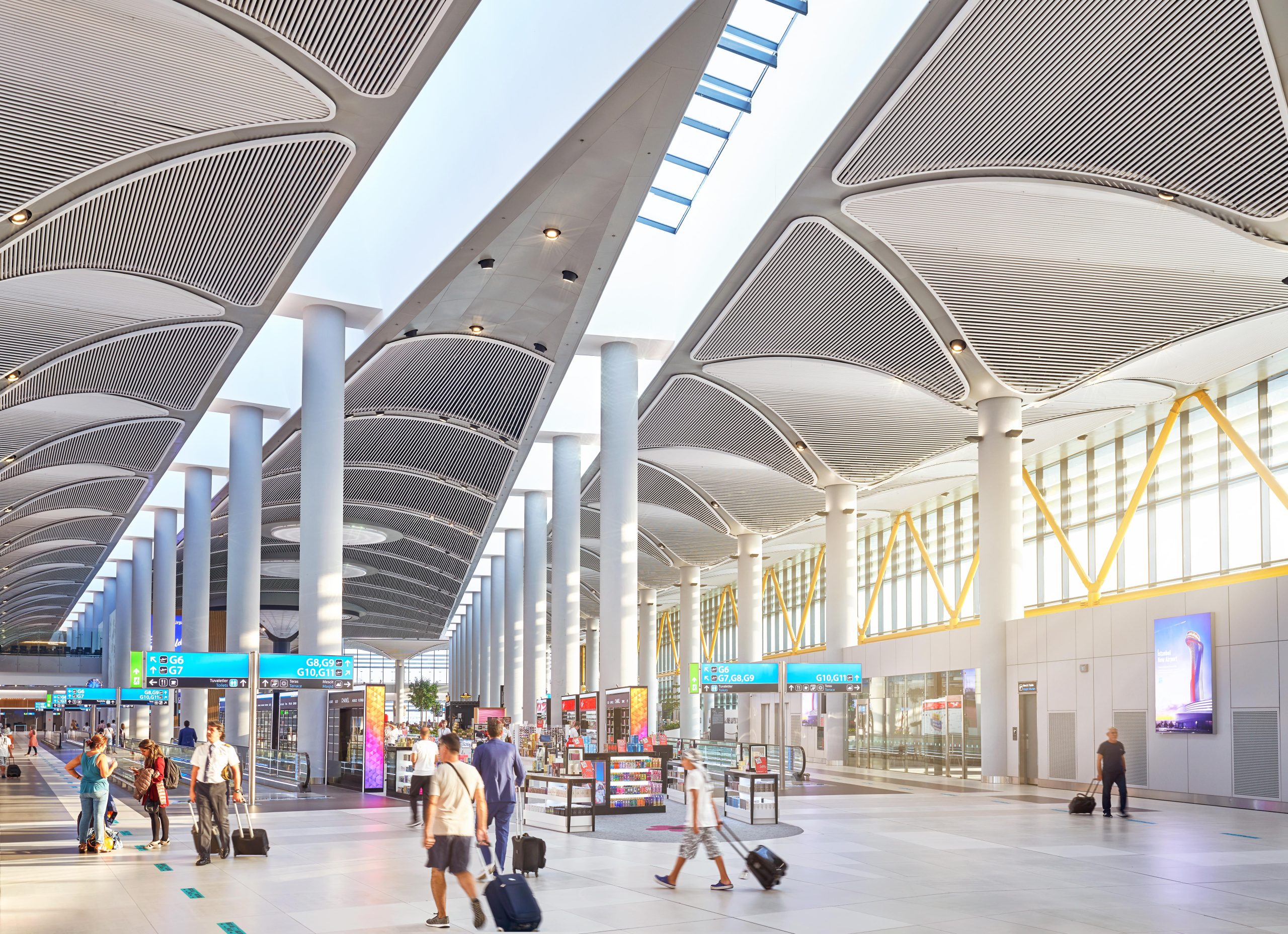Enhancing environmental sustainability and energy efficiency of İGA Istanbul Airport
5 September 2022
Shares
For International Airport Review, iGA Istanbul Airport outlines the strides it’s making towards sustainability and becoming more socially responsible.
As the world’s economy has grown, aviation has become a rapidly growing sector. Airports lie at the heart of the aviation industry and play a vital role within the UN Sustainable Development Goals, which include disaster preparedness, employment, finance and energy. Airport operations need to be fast and reliable and are of critical importance for other stakeholders in this sector, serving the entire region with the social and economic impact they have in their geography.
The seamless continuity of the aviation industry in the long-term will depend on the operation of its environmental, economic and social disciplines. For example, the effects of climate change due to environmental conditions will directly affect flight safety and airport infrastructure. The consequences of climate change can lead to economic and social problems, with these needs on the increase.
Our Sustainability Committee, meeting quarterly under the leadership of our CEO, has an important role to play in discussing, following up, and completing these targets. We share the results of our sustainability performance with the public and our stakeholders through an annual GRI-approved sustainability report.
Integration of sustainability, digitisation, passenger comfort, and affordable prices. Each individual area is growing rapidly but remains fragile with the main challenge being to keep them all integrated, aligned with the business plans, and see an increase in their resilience.
Environmental sustainability practices
Advance Surface Movement Guidance and Control System (A-SMGCS)
One of the most important factors in the relationship between airports, airlines, and air traffic management is the possibilities offered by the airport infrastructure. Air traffic, taxi times and getting service from the bridge all directly affect emission reductions. Finding a balance in capacity should be maintained between the airspace and airside of the airports under a concept of gate-to-gate network efficiency. In order to enhance this capacity, airports should provide the necessary infrastructure on the airside for minimum runway occupancy time (ROT), consistent and continuous taxiing and sufficient aircraft parking stands matching the terminal area airspace (TMA) set up. This will minimise the time both in the air and on the ground. At iGA Istanbul Airport, our point merge procedure provides us with the flexibility to operate triple runways in dual, independent parallel operations, minimising airspace time. Our end-around taxiway and multiple parallel taxiway systems, operated using A-SMGCS Routing Service, provide short and continuous taxi operations, minimising emissions.
371 parking stands, most of which are in multiple apron ramp system (MARS) configuration, are distributed around the terminal and cargo aprons providing efficient and flexible parking capacity.
A-SMGCS is the main system used by our air traffic control (ATC) and one of the key systems providing almost all airside data for successful Airport Operations Control Centre operations. This data can be used to provide a detailed analysis from performance (operations, safety, environmental, technology, capacity, etc.) to individual cases (accidents, incidents, good/bad examples, etc.). A-SMGS at Istanbul Airport is at the core of the ATC operations, integrated into 14 different systems and providing 15 different operation alarms. So, for example, safety net is a function under the A-SMGCS which has both an operational tool with alarms, and an analysis tool for incidents/trends. The A-SMGCS system helps to effectively manage the Istanbul Airport airside, from runways to stands, providing operational efficiency, airport capacity management, emission and noise impact reduction and enhanced situation awareness and safety. With the implementation of A-SMGCS Routing (Level 3) and Guidance (Level 4 Follow the Green), the dynamic algorithm provides the shortest taxi route based on real constraint and conditions. Our teams are working on the development of new algorithms for a “lowest emission route” option for controllers, which is a new area of A-SMGS implementation under the green airport concept.
Achieving ACI’s net zero 2050 targets
In line with carbon footprint management and reduction studies, which have been carried out within the scope of the environmental sustainability studies, Istanbul Airport is one of the 238 airports that have made the ‘ACI Europe 2050 Net Zero Commitment’. We also continue to communicate effectively with airport stakeholders, implementing activities and studies to reduce greenhouse gas emissions in stakeholder organisations. Within the scope of our efforts to reduce carbon emissions at Istanbul Airport, ISO 50001 Energy Management System and ISO 14064 Greenhouse Gas Management System installations have been completed and certified by being included in ACI’s Carbon
Accreditation Programme.
At Istanbul Airport, a 2050 net zero CO2 roadmap has been prepared in line with the IPCC 1.50C targets. In line with this roadmap, a carbon emission reduction strategy has been established. From the very beginning, we have implemented energy efficiency activities, energy studies and system improvements, electric vehicle usage and vehicle charging station installations in the short term. A list of programmes and actions are currently being planned in order to achieve the 2050 goals. Some of the highest priority programmes/actions are:
IoT technology and big data platform


Credit: iGA Istanbul Airport
iGA Istanbul Airport’s entire 76 million square meter area is covered by the Wireless (IoT) LoRaWAN network. This wireless IoT system and big data platform provides remote monitoring of all endpoints, as well as constant monitoring of alarm conditions and status feedback, enabling optimisation and efficiency. It provides constant updates about our current systems and allows us access to even the furthest point in the airport. Various outcomes have been obtained by establishing communication between different operational technology systems.
Our primary goal is to produce and spread the usage of SAF at Istanbul Airport, using it as an effective tool to reduce our carbon footprint”
Efficiency is further improved through remote monitoring of equipment positions (start‑stop, malfunctioning, functioning, overflowing, interruptions, etc.) in drainage pumps, aviation systems, energy systems, and water pumping stations via IoT, which allows for instant intervention if required. In our field, three independent sources of feedback from 80 drainage pumping stations, two different sources of information from 110 aviation systems, 10 different sources of information from 450 energy systems, and three different sources of information from three water supply stations are received constantly. Remote readings of a total of 3,200 electrical and electro-mechanical meters belonging to our tenants both inside and outside the Terminal, a process which would normally take days, are automated via IoT and integrated into the Enterprise Resource Planning (ERP) application. The temperature and humidity status of the 700 technical rooms at the airport are monitored by IoT in order to maximise fire safety and ensure energy saving in these areas. Possible malfunctions due to heat and humidity can be averted.
The algorithms used in the big data platform, generated by data acquisition, can enable predictive maintenance. The acquired data ensures that the 2050 net zero CO2 target is feasible. Data acquired from this platform will be used for capacity planning for the solar power plant (SSP) and Hydrogen facilities, which will be built to create a renewable energy ecosystem. The decision-making processes are managed by closely monitoring the entire system. In line with our 2050 net zero CO2 objectives, our primary goal is energy efficiency. The IoT applications allow us to acquire the data needed for effective analysis of our processes as well as a continued improvement with regards to our energy efficiency goals.
eGPU usage
The algorithms used in the big data platform, generated by data acquisition, can enable predictive maintenance. The acquired data ensures that the 2050 net zero CO2 target is feasible”
The use of terminal bridge parking within aircraft parking areas and the attached services provided stand out in terms of renewable energy use and energy efficiency. In all bridge parking positions, the energy required by stationary aircraft can be supplied via the electric supply units. In this way, we can prevent the use of the aircraft’s own generator (accelerated processing unit) and/or usage of graphics processing units (GPUs) working with fossil fuels. These applications also meet the requirements of the European Commission’s Fit for 55 proposal. In addition, the PCA (electric pre-conditioned air) service can be equipped with renewable energy sources, thus reducing the use of fossil fuels by ground handling companies offering this service.
Use of sustainable aviation fuel (SAF)


Credit: iGA Istanbul Airport
SAF appears to be the most efficient method of reducing the aviation industry’s carbon footprint. The EU Commission has stated that if SAF is not used, it will not be possible to reach the 2050 net zero targets. Although this responsibility lies with the airlines, airports must also play a part by providing an infrastructure for the storage and supply of SAF. At Istanbul Airport, we began our services in collaboration with Turkish Fuel Systems (TFS) for SAF usage in March 2022, with Turkish Airlines consistently using SAF twice a week. Our primary goal is to produce and spread the usage of SAF at Istanbul Airport, using it as an effective tool to reduce our carbon footprint.
Social sustainability practices
Customer experience and accessibility
iGA, aiming to provide the highest quality of service to different groups within our society, has established the iGA Cares Programme. This programme is designed to ensure that accessible travelling is possible and includes assistance and information on tactile paving, accessible transportation, accessible toilets, sign language and pet rooms, among other services.
iGA Academy
iGA has created career opportunities through an online training platform called the iGA Academy, which provides professional training in managerial and social skills to employees. The iGA Academy, which has trained 120 internal trainers within the scope of sustainable training activities, has made more than 150 training courses sustainable by digitising them during 2022.
In addition to this, the iGA Academy has provided awareness training in the field of accessibility to a total of 1,498 personnel during 2021 and 2022, and international sign language training to a total of 196 personnel.
iGA HUB / Incubation Centre
One of our primary goals is to build solid, reliable and scientifically based relationships with our stakeholders. Thus, the iGA HUB Project that was established in 2022 to support entrepreneurs and SMEs presenting innovative ideas, is a good example of governance and stakeholder interaction at Istanbul Airport.
Social Investment Programme
The Social Investment Programme has two components; rapid impact projects aimed at meeting basic needs and capacity building, and long-term, tangible output and income-generating projects through sustainable activities. The programme aims to reach vulnerable groups in need.


Credit: iGA Istanbul Airport
The EU Commission has stated that if SAF is not used, it will not be possible to reach the 2050 net zero targets”
We also have a separate page for our aviation-based social responsibility projects. We reach out to children and young adults with our aviation-themed projects such as school trips to Istanbul Airport, inter-high-school model aircraft competition and Flight Academy. Supporting local women through various projects such as knitted doll production and weaving projects, and the rehabilitation of bee keeping around Istanbul Airport, are good examples of sustainable rural development projects.
As a reflection of our sustainability approach, all of these programmes were evaluated by the social return on investment (SROI) method in order to understand the changes made and the value created, as well as to get feedback from our stakeholders. The results showed that our SROI ratio was 1/7.32, which is a relatively high result showing the strong relationship between communications service request (CSR) projects completed and the target groups. This study will be published in the upcoming months.
Signatory of UN WEPs
As a strong supporter of women’s empowerment, iGA has signed the UN Women’s Empowerment Principles (WEPs) in June 2022, and will monitor this as an important sustainability topic.
These are the various initiatives we are proud to run at iGA. To find out more, head to our website
istairport.com.













